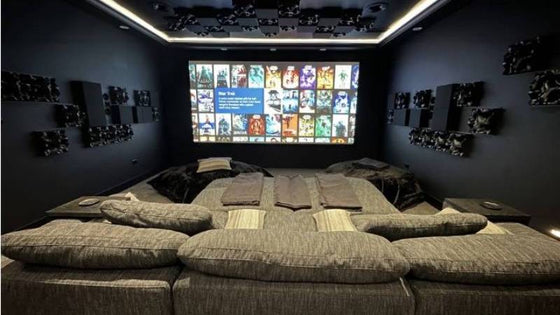Creating a system you love shouldn't be difficult. The Acoustic Frontiers blog is here to help.

A UPS is a device that provides battery power to connected electronics in the event of a power outage. There are three different types of UPS systems: standby, line interactive and online ‘dual conversion’.
Pros:
Cons:

In a standby UPS, a battery charger converts AC to DC to keep the battery full for when it is required. The battery is not in the AC circuit. When the line voltage goes below a certain predefined level the inverter switches on and is connected via the transfer switch to the AC line. The inverter converts DC to AC.
The main advantages of a standby UPS are efficiency and low cost. The only things that are consuming power are the line voltage monitoring circuitry and the battery charger. Battery life is longer than for other designs since it is generally out of the circuit. They cannot protect from under or overvoltage conditions and offer no input to output noise reduction or surge isolation.

Line interactive UPS systems appear similar at first glance but they have a crucial difference – the inverter is always on, generating AC from the battery which is kept full by the battery charger. A sensing circuit monitors the AC waveform and determines how much current to draw from the inverter to keep the voltage within tolerances.
Line interactive UPS systems have the advantage of being able to support brownouts and undervoltages which standby UPSs cannot. Some of the more sophisticated line interactive solutions provide ‘bucking’ circuitry, which pulls down the AC voltage if it is too high.

The final type is an online or dual conversion UPS. In this design there is no direct path for AC. Power is converted from AC to DC by a rectifier which feeds the battery. An inverter then converts the AC back to DC.
The advantage of this approach is that it offers a very high amount of noise and transient isolation between input and output. Online UPSs are energy inefficient however, and batteries need replacing more frequently than in other designs since they are constantly being charged and discharged.
Learn how early home theater design, layout, and acoustic treatment improve performance in new home construction.
This media room was intentionally designed to feel like part of the home—not a separate, tech-heavy space. Through careful acoustic planning, equipment integration, and final calibration, we achieved a room that is both beautiful to live in and immersive to experience.
"No other subwoofer system I’ve owned even comes close to what this room delivers. Reaching out to Acoustic Frontiers was one of the best decisions I’ve made—I highly recommend working with them if you want to get the most out of your theater."

Nyal Mellor, Founder, Acoustic Frontiers



Nyal Mellor
Author